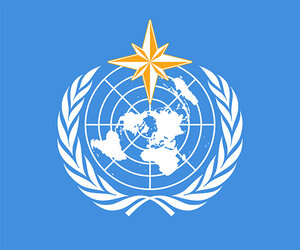Space technology put into service for global water resources observations
The world’s rivers, lakes, reservoirs and groundwater as well as snow fields and glaciers are the main sources of freshwater to support terrestrial life and human livelihoods.
Continuous observations are crucial to manage these water resources for the benefit of mankind and the environment and also to provide crucial forecasting services to prevent water-related disasters such as floods and droughts. These tasks are routinely undertaken by the National Hydrological Services of countries.
However, hydrological information is insufficient especially in developing countries and many areas of the world are currently not monitored for their water resources. Therefore, critical hydrological information that is necessary to manage the world’s water resources and prevent water-related disasters is inadequate especially in the developing world.
In this situation, remote-sensing techniques have demonstrated an extremely active innovation capacity in the field of continental waters during the last 20 years. They can now be used to locate water bodies and delineate river networks, to quantify and/or estimate water related variables such as precipitations, soil wetness, water levels, water storage, to monitor water balance of large river basins on time scales ranging from weeks to years, to quantify spatial parameters relevant for hydrological models and to provide real-time information for flood forecasting.

Among the most promising space missions are satellite altimetry missions, such as ESA's ERS and Envisat and GMES Sentinel-3, that provide surface water levels (lakes, reservoirs, rivers, wetlands and floodplains), hydrology missions like ESA's SMOS, and space gravity missions, like NASA-DLR's GRACE, that provide estimates of the variations of terrestrial water storage (in soils, lakes, reservoirs and groundwater) in space and time. Used in conjunction with conventional observations and hydrological modelling, these observations from space also have the potential to improve significantly our understanding of hydrological processes affecting large river basins in response to climate variability and change.
An improved description of the continental part of the water cycle will be of major importance for the monitoring of water resources, for the identification of climate change impacts on the dynamics of river basins and aquatic ecosystems, for the inventory and better management of water resources available for human consumption and activities (agriculture, urbanisation, hydroelectric energy resources).

In this context, the second “Space for Hydrology” workshop, organised by ESA in collaboration with the World Meteorological Organization (WMO), was held in Geneva, from 12-14 November 2007. It follows the first workshop, held in Toulouse, France, in September 2003.
The workshop was attended by close to 100 experts from 27 countries from the science community, the developing world, hydrologists and the space agencies. The workshop aimed to assess the current stage of knowledge and activities in space-based hydrological observations undertaken by several countries through their space agencies and to exchange knowledge and know how with hydrologists and researchers.
The workshop showed the efforts undertaken to bring space technologies into service for water resources management and disaster prevention and concluded that further investments in dedicated hydrological satellite missions are necessary to improve timeliness and accuracy of space-based hydrological observations and modelling for water resource assessments and forecasting services to make them fully operational for use by the hydrological services of the world in the next few years.






